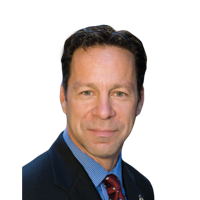Management
Management
The sustainability of the organization relies on its ability to monitor the external environment for opportunities, trends and risks, and also its ability to learn, change and innovate.
Read More
Management
The New Workforce Expedition
Building Meaningful Employment Environments.
July 17, 2024
Management
The Urgent Call for Training: Addressing & Actions to Close the Skills Gap
We’ll explore what is causing the skills gap, what training programs we should be implementing, how to start, and how we protect the non-digital skills in a growing digital world.
July 15, 2024
Sponsored Content
The Battle of Continuous Improvement Tools: Smartsheet vs Minitab Engage
July 8, 2024
Management
The Evolving Role of Quality Professionals in the Quality 4.0 Era: Merging Human Expertise with Technological Advancements
Machines can accomplish so much of what humans used to do. Now is the time to leverage technology while capitalizing on the unique qualities humans bring.
July 5, 2024
Management
The Rise of AI Governance: Unpacking ISO/IEC 42001
The need for AI governance has never been more pressing.
July 5, 2024
Lean with Lazarus | Ian R. Lazarus
Quality is Relative
Fortunately for quality managers, there are a number of effective tools to ground the quality team in what standards are the most important.
July 3, 2024
Column | John Vandenbemden
Brief History of ANSI/ASQ Z1.4
Military standards came from a need for a sampling system that did not require 100% inspection for use in testing munitions and other destructive tests.
July 3, 2024
Speaking of Quality | Claire Hopkins
Creating a Space for NextGens
Quality is present in all sorts of industries, which makes it a vibrant and
interesting field, but also presents a challenge when looking to find new
professionals to bring into the community.
July 1, 2024
Lean with Lazarus | Ian R. Lazarus
What’s the Big Deal with Big Data?
There is an interesting difference of opinion over how much data should be collected.
June 28, 2024
Stay in the know with Quality’s comprehensive coverage of
the manufacturing and metrology industries.
eNewsletter | Website | eMagazine
JOIN TODAY!Copyright ©2024. All Rights Reserved BNP Media.
Design, CMS, Hosting & Web Development :: ePublishing




.png?height=168&t=1720480765&width=275)








